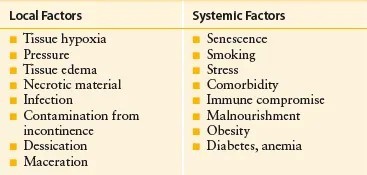A client diagnosed with calcium kidney stones has a history of gout. A new prescription for aluminum hydroxide is scheduled to begin at 0730. Which client medication should the nurse bring to the healthcare provider's attention?
Furosemide.
Aspirin, low dose.
Allopurinol.
Enalapril.
The Correct Answer is C
A) Incorrect- Furosemide is a loop diuretic used to treat conditions such as edema and hypertension. It does not directly relate to the client's history of gout or the risk of calcium kidney stones.
B) Incorrect- Low-dose aspirin is often used for its antiplatelet effects to prevent cardiovascular events. It does not directly relate to the client's history of gout or the risk of calcium kidney stones.
C) Correct- Allopurinol is a medication used to treat gout by reducing the production of uric acid in the body. However, allopurinol can also increase the risk of forming calcium oxalate kidney stones, which is the type of kidney stone mentioned in the client's history. Calcium oxalate stones are the most common type of kidney stone, and they are composed primarily of calcium and oxalate. In this case, the client has a history of gout and is prescribed allopurinol. The nurse should bring the client's prescription for allopurinol to the healthcare provider's attention because
it has the potential to contribute to the formation of kidney stones, which could exacerbate the client's existing condition.
D) Incorrect- Enalapril is an angiotensin-converting enzyme (ACE) inhibitor used to treat hypertension and heart failure. It does not directly relate to the client's history of gout or the risk of calcium kidney stones.
Nursing Test Bank
Naxlex Comprehensive Predictor Exams
Related Questions
Correct Answer is ["B","D","F"]
Explanation
As people age, the turnover of skin cells decreases, resulting in slower wound healing. This can prolong the healing process and increase the risk of complications.
The immune system's function, including T-cell function, tends to decline with age.
T-cells play a crucial role in the immune response and wound healing. Decreased T-cell function can impair the body's ability to fight infection and promote efficient healing.
With aging, there is a natural loss of subcutaneous fat, which can affect wound healing. Subcutaneous fat provides padding and protection to the underlying tissues, and its reduction can increase the risk of tissue damage and delays in healing.
Insulin resistance, pigmentation changes, and polypharmacy are not directly age-related factors that impact wound healing. Insulin resistance is a condition related to impaired glucose metabolism and can affect wound healing in individuals with diabetes or other metabolic disorders, but it is not necessarily an age-related factor. Pigmentation changes and polypharmacy (the use of multiple medications) may be associated with aging but do not directly affect the physiological processes involved in wound healing.

Correct Answer is A
Explanation
To monitor for adverse effects from prasugrel, a platelet inhibitor, the nurse should prioritize assessing for bleeding or abnormal bleeding tendencies. Therefore, observing the color of urine is the most important assessment among the options provided.
Changes in urine color, such as the presence of blood or dark-colored urine, can indicate internal bleeding or bleeding in the urinary tract, which can be a potential adverse effect of platelet inhibitors. It is crucial to monitor for signs of bleeding to ensure the client's safety and intervene promptly if necessary.
Whether you are a student looking to ace your exams or a practicing nurse seeking to enhance your expertise , our nursing education contents will empower you with the confidence and competence to make a difference in the lives of patients and become a respected leader in the healthcare field.
Visit Naxlex, invest in your future and unlock endless possibilities with our unparalleled nursing education contents today
Report Wrong Answer on the Current Question
Do you disagree with the answer? If yes, what is your expected answer? Explain.
Kindly be descriptive with the issue you are facing.
